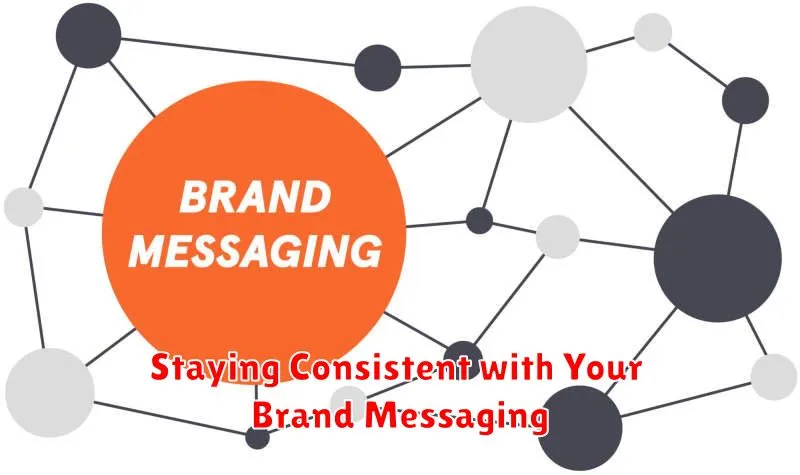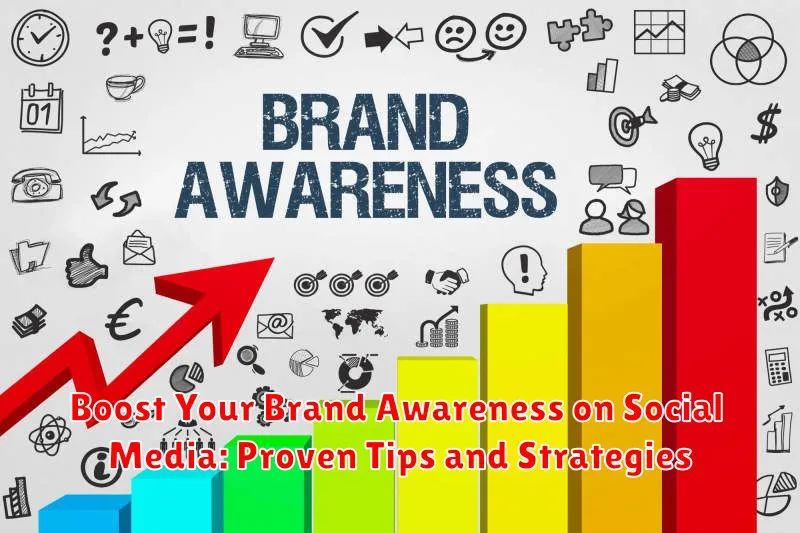In today’s digital age, a strong social media presence is crucial for any brand seeking to thrive. Boosting brand awareness on social media is no longer a luxury, but a necessity. This article will provide proven tips and strategies to help you elevate your brand’s visibility, connect with your target audience, and ultimately achieve significant growth. Whether you are a small business just starting out or an established enterprise, understanding the nuances of social media marketing is essential for success. Learn how to effectively leverage social media platforms to increase brand recognition and cultivate a loyal following.
From crafting engaging content to utilizing effective social media strategies, this guide covers all the key aspects of building a powerful brand presence. Discover how to optimize your profiles, implement targeted advertising campaigns, and track your performance to maximize your impact. By implementing the proven tips and strategies outlined in this article, you can effectively boost your brand awareness on social media and drive meaningful results for your business.
Understanding the Importance of Brand Awareness
Brand awareness is the foundation of a successful business. It represents the extent to which consumers recognize and recall your brand. Strong brand awareness can be a powerful asset, influencing consumer purchasing decisions and fostering loyalty.
When consumers are familiar with your brand, they are more likely to consider your products or services over those of your competitors. This recognition builds trust and credibility, particularly in crowded marketplaces. Increased brand awareness can also lead to greater word-of-mouth marketing as satisfied customers recommend your brand to their networks.
Furthermore, strong brand awareness allows you to charge premium prices. Customers are often willing to pay more for brands they know and trust. This perceived value contributes directly to higher profit margins and overall business growth.
Defining Your Target Audience on Social Media
Before launching any social media campaign, it’s crucial to define your target audience. Understanding your audience is the foundation of effective brand building. Without a clear picture of who you’re trying to reach, your efforts will likely be scattered and ineffective.
Start by analyzing your existing customer base. Consider their demographics, interests, and online behavior. What platforms do they frequent? What kind of content do they engage with? These insights can provide a starting point for building your social media target audience.
Next, research your competitors. Identify their target audience and analyze their social media strategies. This can help you understand who they’re reaching and how you can differentiate your brand.
Finally, use social media analytics tools to gather data on your audience. These tools can provide valuable information about demographics, interests, and behavior, allowing you to refine your target audience and tailor your content accordingly.
Creating Engaging Content

Engaging content is the cornerstone of a successful social media strategy. It’s what captures your audience’s attention and encourages interaction. Content should provide value to your followers, whether it’s entertaining, informative, or inspiring.
Vary your content formats to keep things fresh and cater to different preferences. Incorporate a mix of videos, images, and text-based posts. Short, impactful videos can be highly effective in grabbing attention, while eye-catching images paired with concise captions can quickly convey your message. Written posts allow for more in-depth discussions and sharing of valuable information.
Storytelling is a powerful tool for engaging your audience on an emotional level. Share stories that resonate with your brand values and connect with your target audience’s aspirations and challenges. Authenticity is key; ensure your stories feel genuine and reflect your brand’s personality.
Encourage interaction by asking questions, running polls, and responding to comments. This fosters a sense of community and strengthens the connection between your brand and your followers. Actively engaging with your audience demonstrates that you value their input and builds stronger relationships.
Leveraging the Power of Hashtags
Hashtags are essential for increasing the visibility of your social media content. They categorize your posts and make them discoverable by users interested in specific topics. Effective hashtag usage can significantly expand your reach beyond your current followers and introduce your brand to a wider audience.
Research relevant hashtags within your industry. Explore which hashtags your competitors and target audience are using. Tools are available to help identify trending and high-performing hashtags. Don’t just use popular hashtags; ensure they are relevant to your content.
Create a branded hashtag. This unique hashtag should be directly related to your brand or a specific campaign. Encourage your audience to use it when sharing content related to your brand. This fosters a sense of community and provides a way to easily track user-generated content.
Vary your hashtag usage. Don’t use the same set of hashtags for every post. Tailor your hashtag selection to the specific content of each post for maximum impact. A mix of broad and niche hashtags can help you reach a diverse audience.
Running Contests and Giveaways
Contests and giveaways are effective tools for boosting brand awareness and driving engagement on social media. They generate excitement around your brand and encourage interaction with your content.
When structuring a contest or giveaway, ensure the prize is relevant to your target audience. A prize that resonates with your audience will attract more participants and generate more buzz.
Clearly define the rules of participation. Make it easy for people to enter and understand what they need to do to win. Simple actions like following your page, sharing a post, or tagging friends can significantly increase your brand’s reach.
Promote your contest or giveaway widely across your social media channels. Use relevant hashtags and engaging visuals to capture attention. Announce the winner publicly and thank all participants for their engagement. This builds goodwill and fosters a sense of community around your brand. Consider tracking the results of your contest or giveaway to gauge its effectiveness and inform future campaigns.
Collaborating with Influencers
Influencer marketing can significantly boost your brand’s visibility and credibility. By partnering with relevant influencers, you can tap into their established audience and gain access to a wider pool of potential customers. It’s crucial to choose influencers whose values and audience align with your brand.
Researching and selecting the right influencers is a key step. Look for influencers who genuinely engage with their followers and possess a strong understanding of your industry. Consider factors such as audience demographics, engagement rates, and content quality.
Establishing clear campaign goals is essential for a successful collaboration. Determine what you want to achieve with your influencer marketing campaign. Is it increased brand awareness, website traffic, or product sales? Having defined goals will help measure the effectiveness of the partnership.
Building authentic relationships with influencers is crucial. Treat them as partners, not just promotional tools. Offer creative freedom and involve them in the campaign development process. This collaborative approach will result in more genuine and impactful content.
Utilizing Social Media Advertising
Social media advertising offers a powerful way to amplify your brand awareness efforts. Paid campaigns allow you to reach a much broader audience than organic reach alone. By targeting specific demographics, interests, and behaviors, you can ensure your message is seen by the right people. This precision targeting minimizes wasted ad spend and maximizes your return on investment.
Most social media platforms provide a variety of ad formats to choose from. Experiment with different ad types, such as image ads, video ads, carousel ads, and story ads, to discover what resonates best with your target audience. Effective social media advertising requires continuous monitoring and optimization. Regularly analyze your campaign performance and make adjustments to targeting, ad creative, and budget allocation as needed.
Consider using retargeting campaigns to re-engage users who have previously interacted with your brand. This can be a highly effective strategy for boosting conversions and reinforcing brand recognition. Remember to set a clear budget for your social media advertising initiatives and track your spending closely.
Measuring Your Brand Awareness Efforts
Measuring the impact of your social media activities is crucial for understanding what’s working and what needs adjustment. Tracking key metrics provides valuable insights into your brand’s visibility and reach.
Reach measures how many unique users have seen your content. A growing reach indicates increasing brand visibility. Impressions, on the other hand, count the total number of times your content was displayed, even to the same user multiple times. High impressions suggest potential for increased engagement.
Engagement metrics like likes, comments, shares, and saves demonstrate how your audience interacts with your content. Tracking these metrics reveals what resonates with your target audience. Website traffic originating from social media indicates how effectively your campaigns are driving users to your website. This data can be tracked through website analytics platforms.
Finally, social listening, or monitoring brand mentions and relevant conversations, provides valuable qualitative data. This allows you to understand public perception of your brand, identify potential influencers, and address customer feedback.
Staying Consistent with Your Brand Messaging

Consistency is key to building a strong brand presence on social media. Maintaining a unified brand voice, visual identity, and messaging across all platforms helps solidify your brand in the minds of your audience. This consistent experience builds trust and recognition.
Develop a brand style guide outlining your brand’s tone of voice, visual elements (colors, fonts, logo usage), and content themes. This guide will serve as a reference for anyone creating content for your social media channels, ensuring a cohesive brand experience.
Regularly audit your social media profiles. Ensure your profile pictures, cover photos, bios, and pinned posts align with your current brand messaging and visual identity. Inconsistencies can confuse your audience and dilute your brand image.
Schedule regular content updates. Consistent posting keeps your audience engaged and reinforces your brand presence. A content calendar can help plan and schedule posts in advance, maintaining a consistent flow of information.

